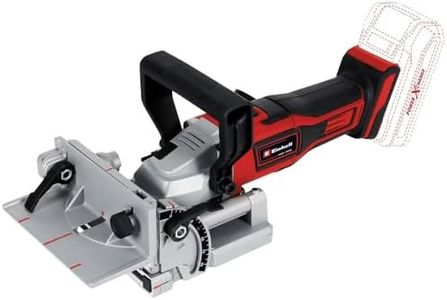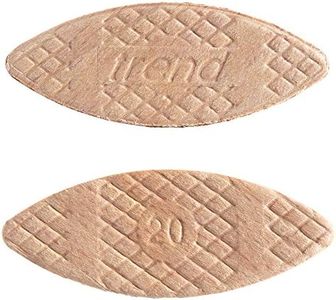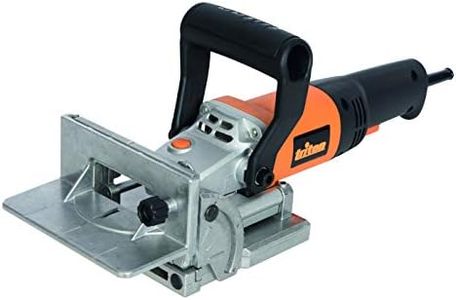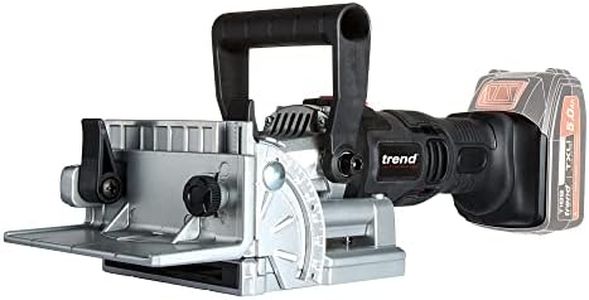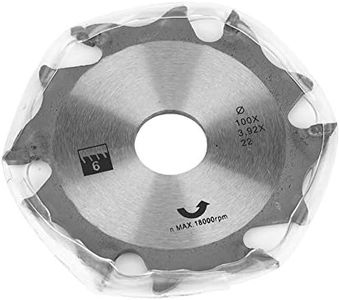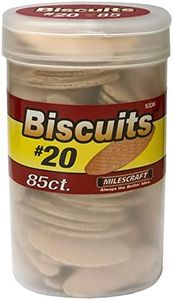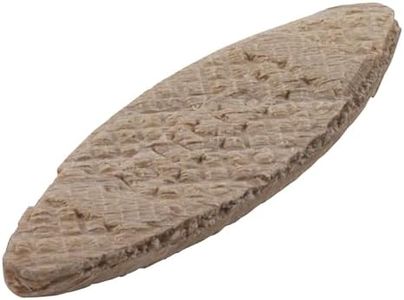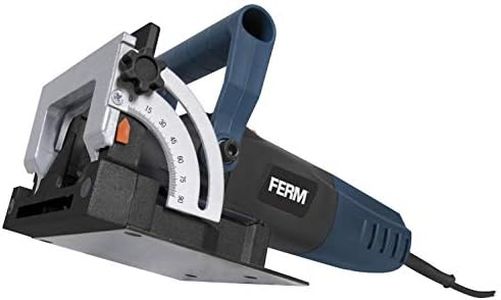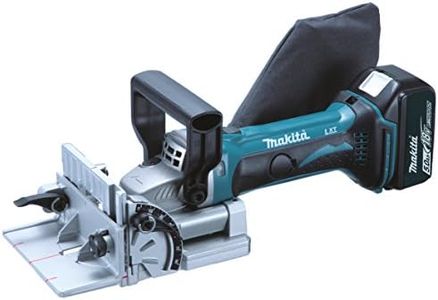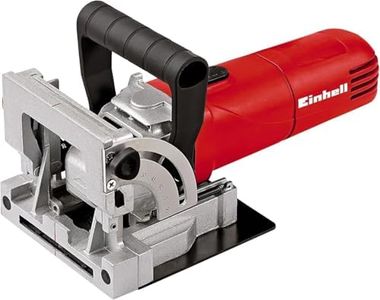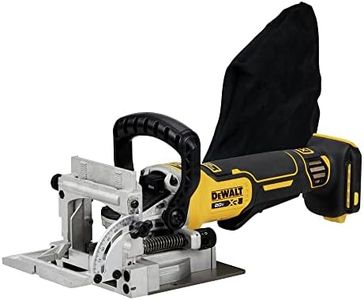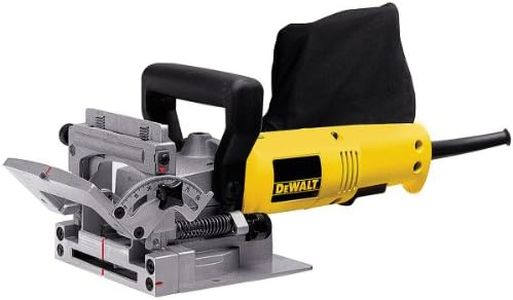We Use CookiesWe use cookies to enhance the security, performance,
functionality and for analytical and promotional activities. By continuing to browse this site you
are agreeing to our privacy policy
10 Best Biscuit Joiners
From leading brands and best sellers available on the web.Buying Guide for the Best Biscuit Joiners
Choosing a biscuit joiner can be a little daunting if you're new to woodworking or furniture making. These tools are fantastic for joining pieces of wood quickly and securely, commonly used in cabinetry or when making tabletops. When picking a biscuit joiner, you want one that matches your project size, has enough power for your materials, is comfortable to use, and offers accurate cuts. Understanding the key specifications will help you select a model that fits your skill level and project needs.Motor PowerMotor power, usually measured in amps or watts, determines how easily your biscuit joiner can cut into wood. A higher-power motor will move through tougher, thicker woods with less strain, while a lower-power motor may suffice for lighter jobs or softer woods. Lighter models typically have motors in the 5–6 amp range—ideal for hobbyists or occasional users, while heavier-duty tasks or frequent use might call for 7–8 amps or more. To pick the right power, consider the type of wood and frequency of use; stronger motors are best for professionals or heavy users, while lighter models suit small projects or beginners.
Blade SizeBiscuit joiners commonly use blades around 4 inches in diameter, but some models offer smaller blades for fine or intricate work. Larger blades can cut deeper slots, suitable for joining thick boards, while smaller blades are great for precision or smaller materials. Most general-purpose work is handled by standard 4-inch blades, but if you plan to do specialized or miniature joinery, look for a tool with blade size options or a smaller blade. Your main projects—whether they're big cabinets or fine boxes—should help you decide which size is most appropriate.
Depth AdjustmentDepth adjustment lets you control how deep the blade cuts into your wood, which determines what size biscuit you can use. Adjustable depth settings are crucial for versatility and accuracy, especially if you plan to work with different biscuit sizes (such as #0, #10, or #20, which are the most common). Some joiners have fixed settings, while others allow more nuance. If you need flexibility for various projects, look for a tool with easy and precise depth control, while fixed settings are simpler for repeated, identical tasks.
Fence AdjustabilityThe fence on a biscuit joiner helps you align the tool and adjust the height and angle of your cut. A good fence can be set to various angles (typically 0–90 degrees) for angled or edge-to-edge joints and can move up or down for different wood thicknesses. If you’ll be joining panels, working at angles, or need precision, choose a model with a sturdy, easily adjustable fence. For very basic, flat joints, you may not need advanced adjustments, but flexibility here adds to the tool’s usefulness.
Dust CollectionCutting biscuit slots creates a lot of sawdust, so dust collection is a valuable feature. Some joiners have a built-in bag, while others can connect to a vacuum. Effective dust collection keeps your workspace cleaner and helps you see your cutting marks better. For indoor or frequent use, prioritize a tool with strong dust management, while occasional outdoor users may find it less critical.
Ergonomics and WeightComfort is crucial, especially if you'll use your biscuit joiner for long periods. A lighter, well-balanced joiner with comfortable grips will be easier to control and reduce fatigue. Heavier models can be harder to maneuver, especially for smaller hands or when working overhead, but may offer more stability for large jobs. Consider how much time you’ll spend using the tool and pick a model that feels good in your hands and is easy to handle for your expected project types.


